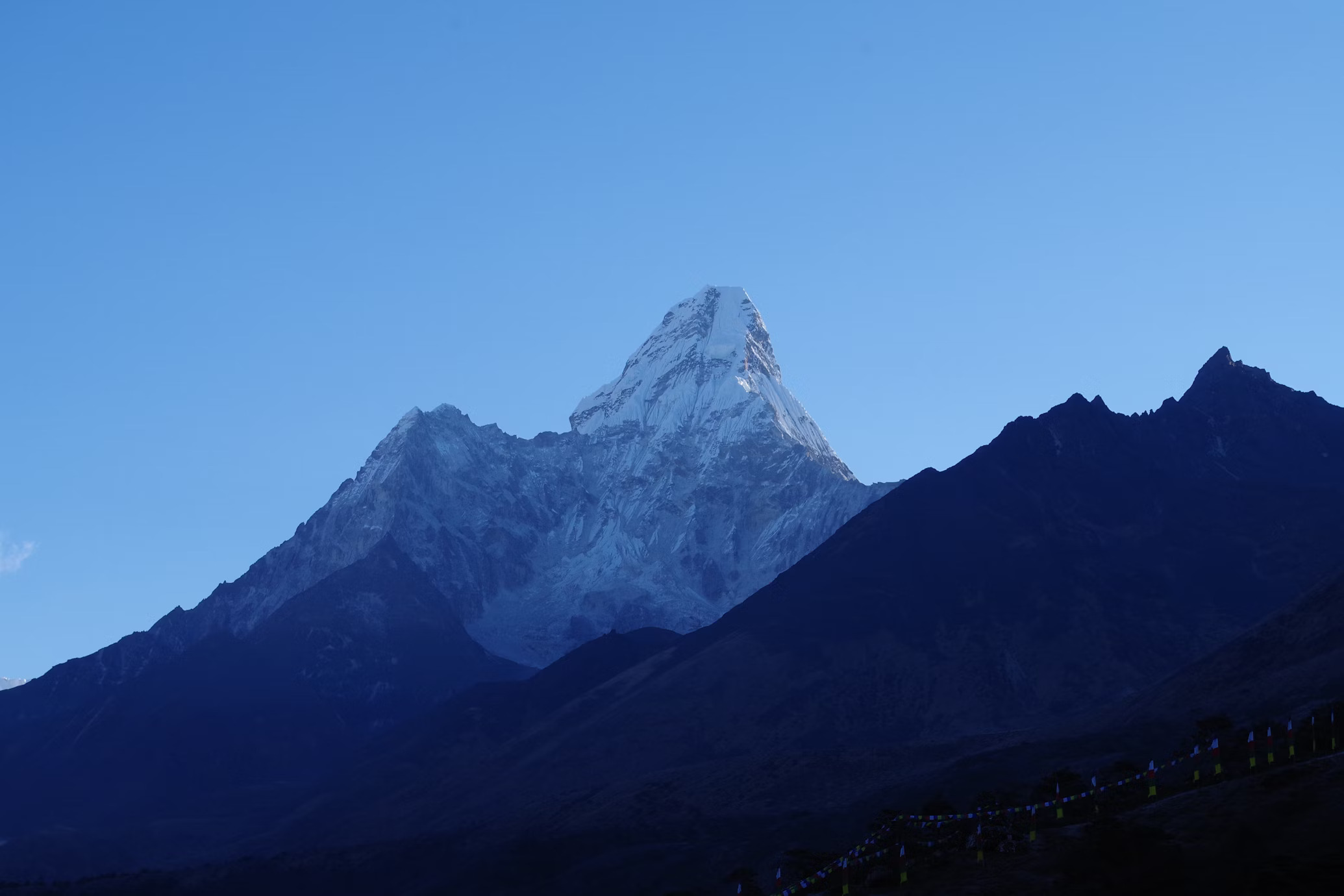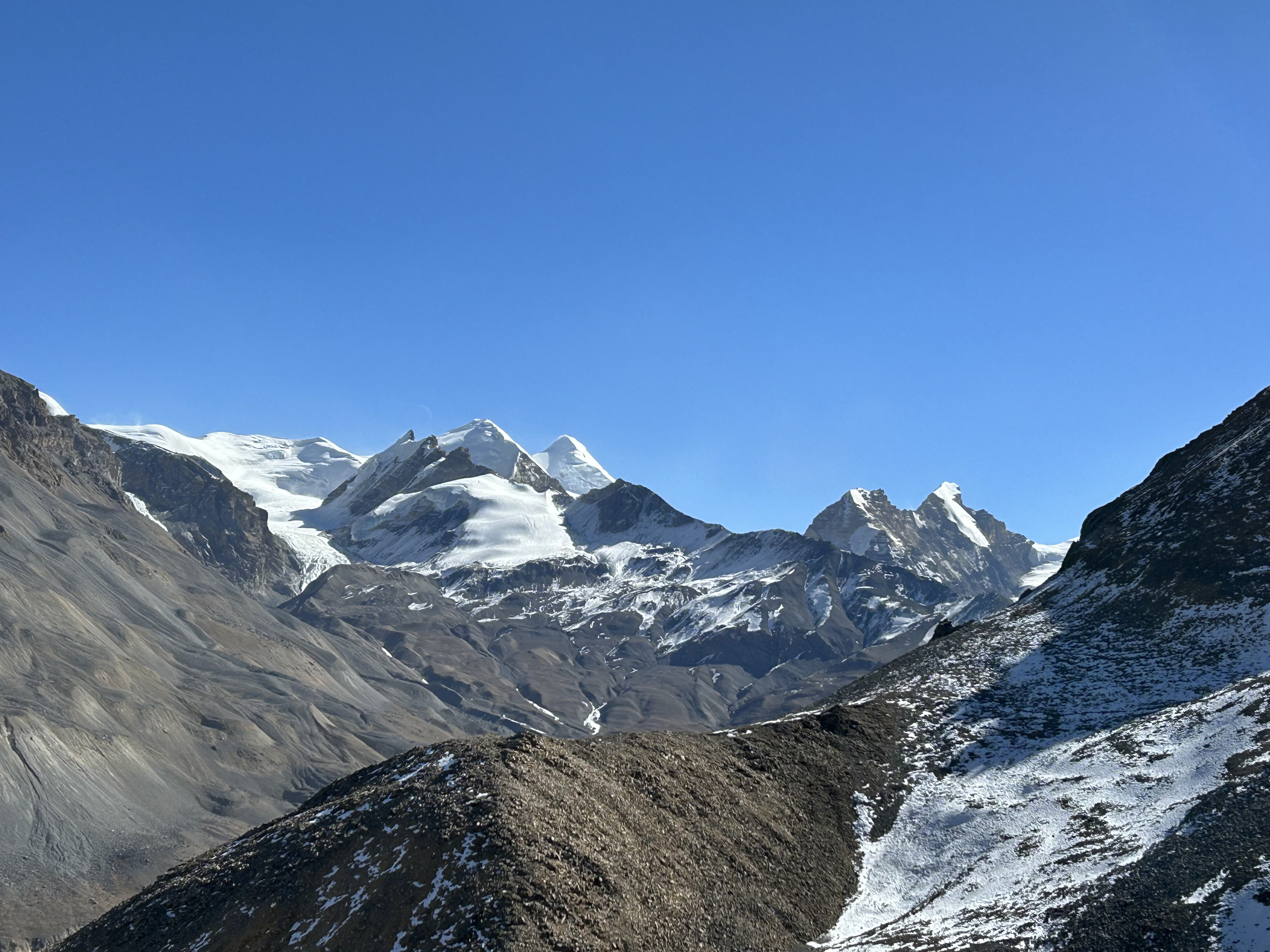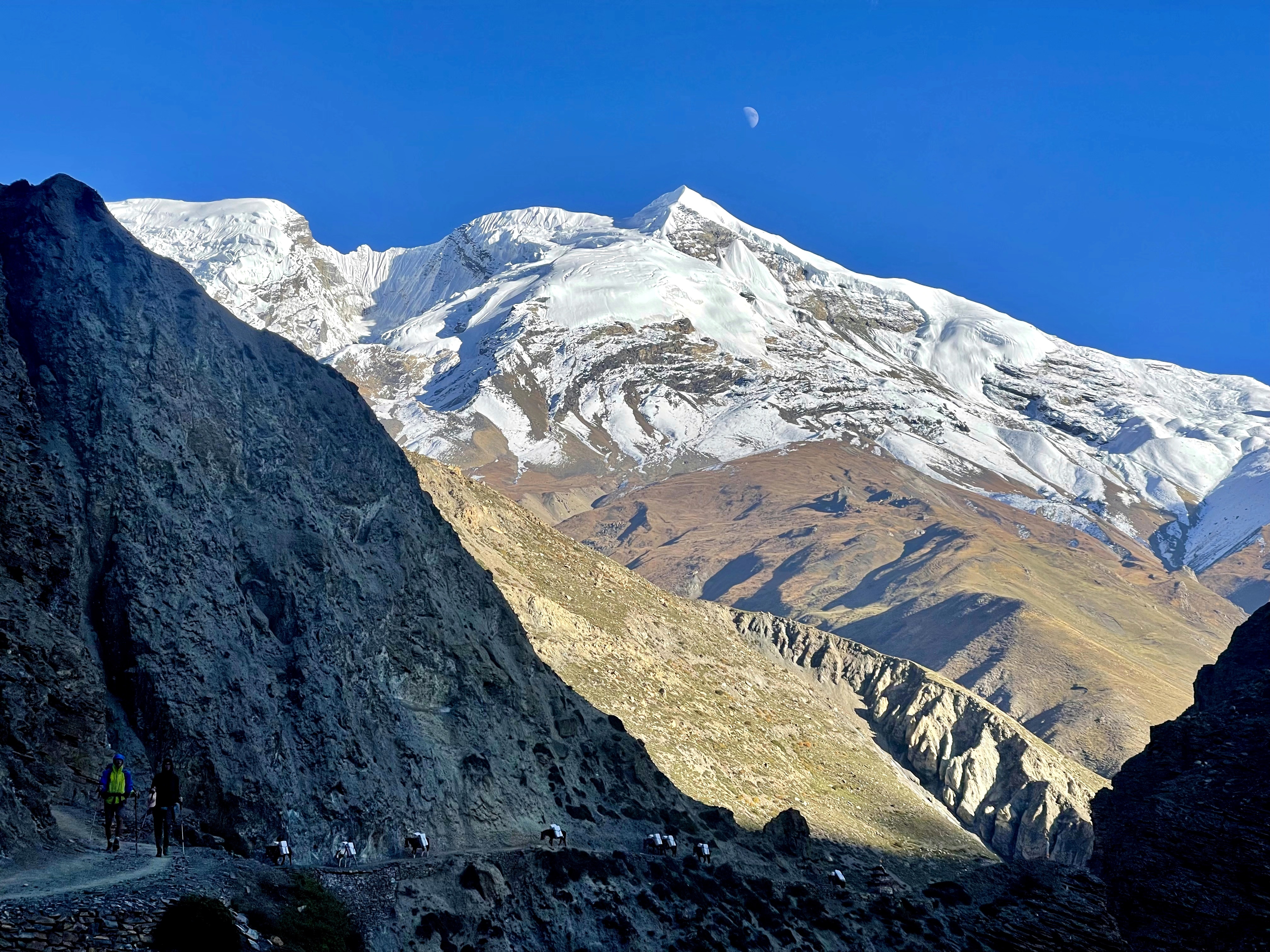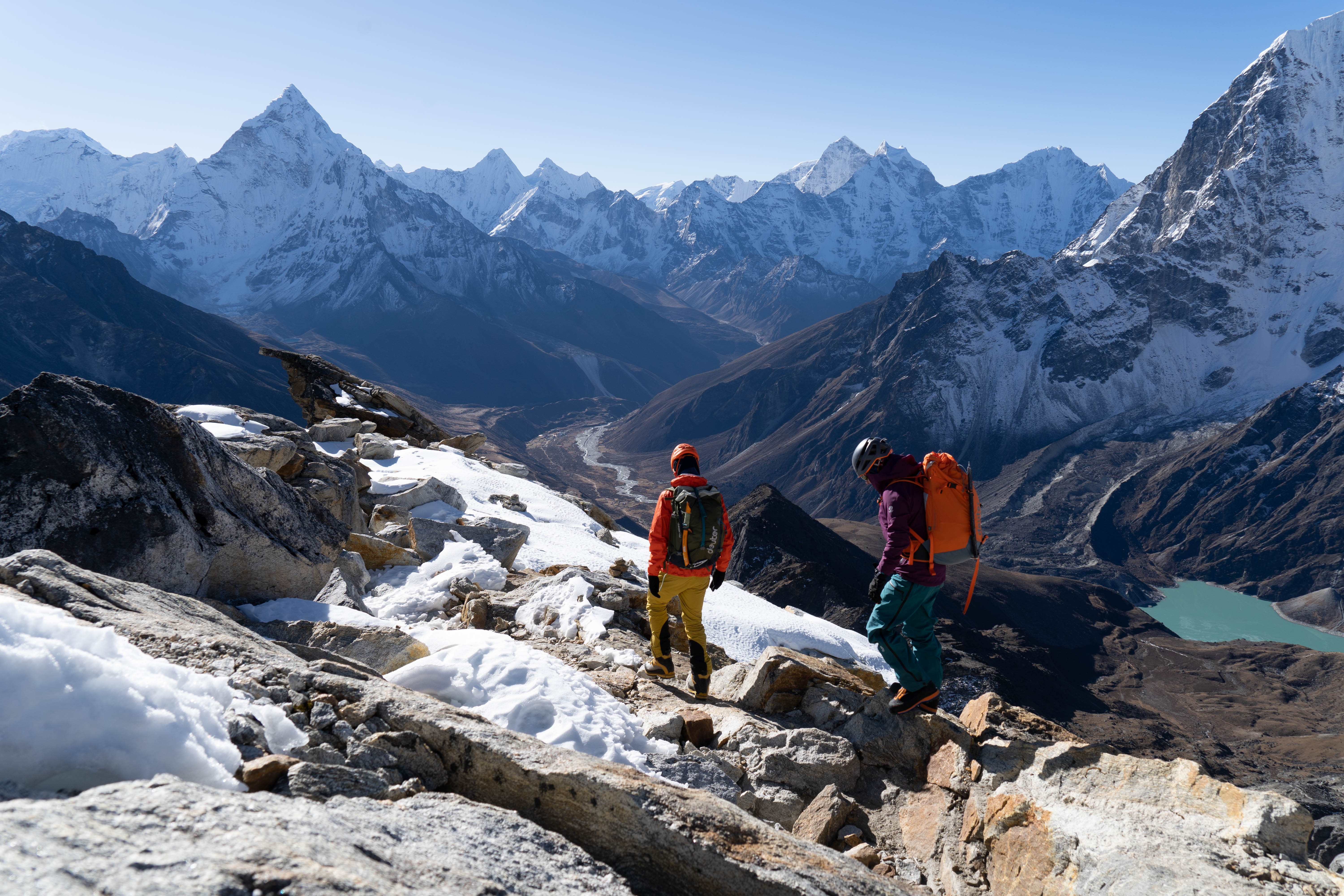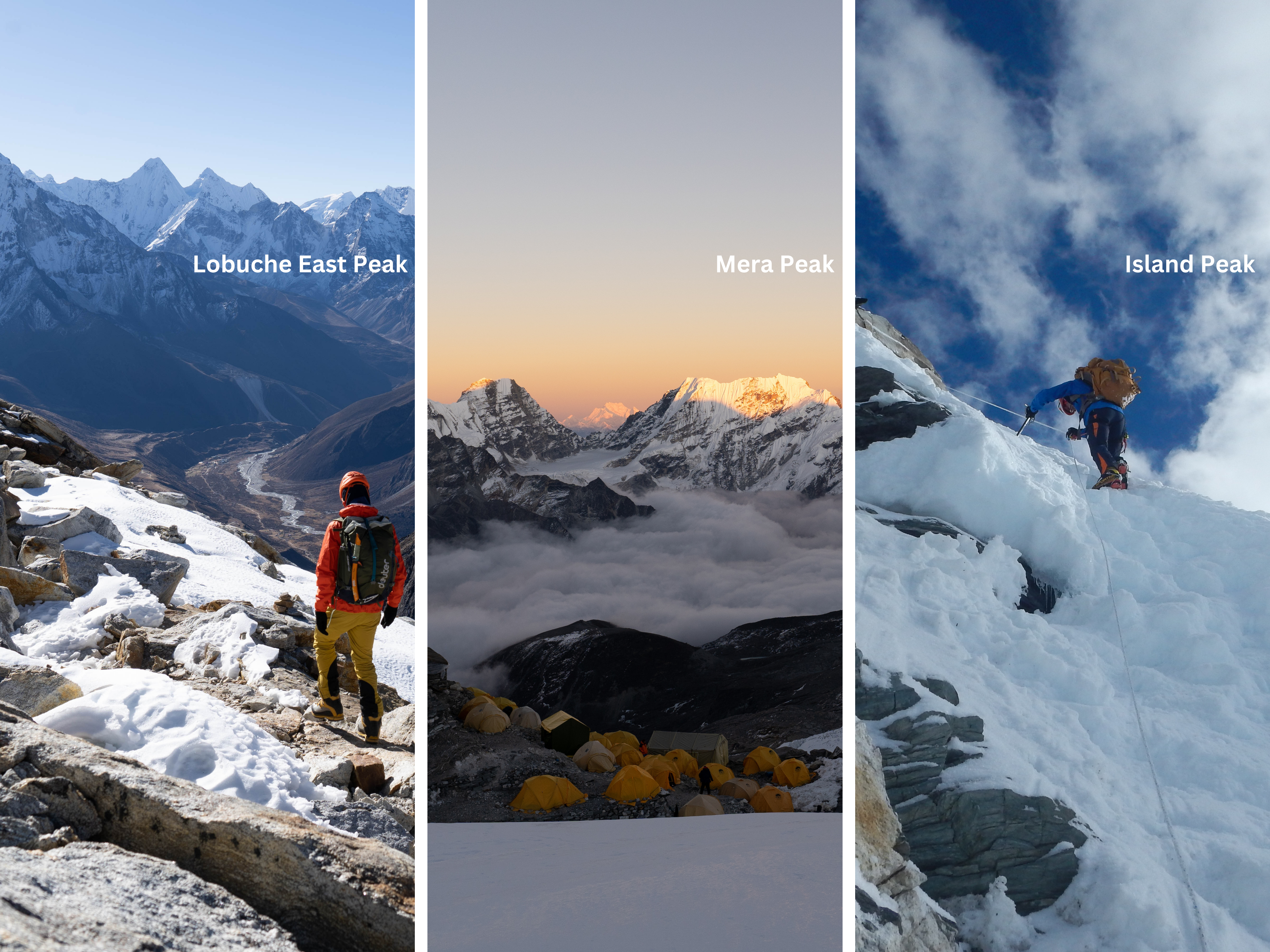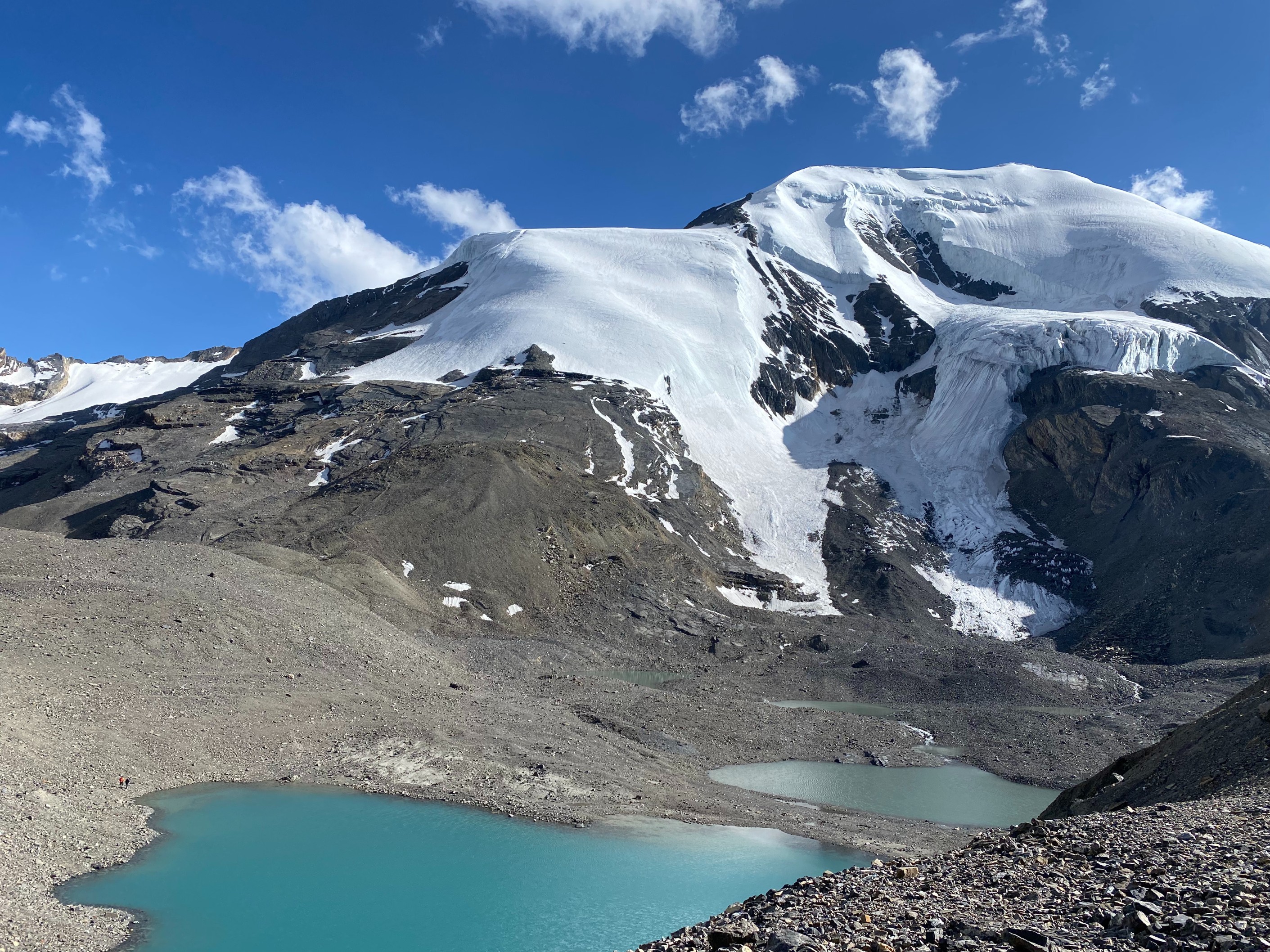Mera Peak, standing at 6,474 meters (21,247 feet), is the highest trekking peak in Nepal. It’s a perfect adventure for those who want to step into the world of Himalayan mountaineering. Located in the quiet and beautiful Hinku Valley, the Mera Peak expedition combines scenic trekking, Sherpa culture, and the excitement of reaching a high summit. It’s an amazing way to experience the mountains of Nepal up close.
What makes Mera Peak special is that it doesn’t require advanced climbing skills. It’s one of the best choices for beginner climbers who are physically fit and ready for a high-altitude adventure. This makes it one of the most popular Nepal mountaineering adventures. Mera Peak climbing is a great way to experience the thrill of climbing without needing to be an expert. Many adventurers take this route as their first Himalayan mountain expedition.
Along the way to the summit, trekkers get to walk through peaceful forests, remote villages, and beautiful valleys. The Mera Peak base camp is a quiet place surrounded by natural beauty where climbers rest and get used to the altitude. The journey is not just about climbing; it’s also about connecting with the land and people. The Sherpa communities offer warm hospitality, and you get to learn about their unique traditions and way of life. It’s a key part of the Mera Peak expedition experience.
Reaching the Mera Peak summit is a huge accomplishment. From the top, you get breathtaking 360-degree views of some of the world’s tallest mountains—Everest, Kanchenjunga, Lhotse, Makalu, and Cho Oyu. The view is truly unforgettable and is one of the highlights of the entire adventure. This moment makes all the effort worthwhile and creates memories that will last a lifetime. It’s why Mera Peak Summit continues to attract trekkers and climbers every year.
The best Mera Peak climbing season is in spring (April to May) and autumn (September to November), when the weather is stable and the skies are clear. The Mera Peak expedition itinerary usually includes several days for acclimatization and preparation to make sure everyone is ready for the climb. The Mera Peak expedition cost depends on the route and support services like guides and logistics. Whether you're taking on Mera Peak ascent for the challenge or the experience, it’s one of the best ways to enjoy sustainable mountaineering in Nepal and explore the heart of the Himalayas.

